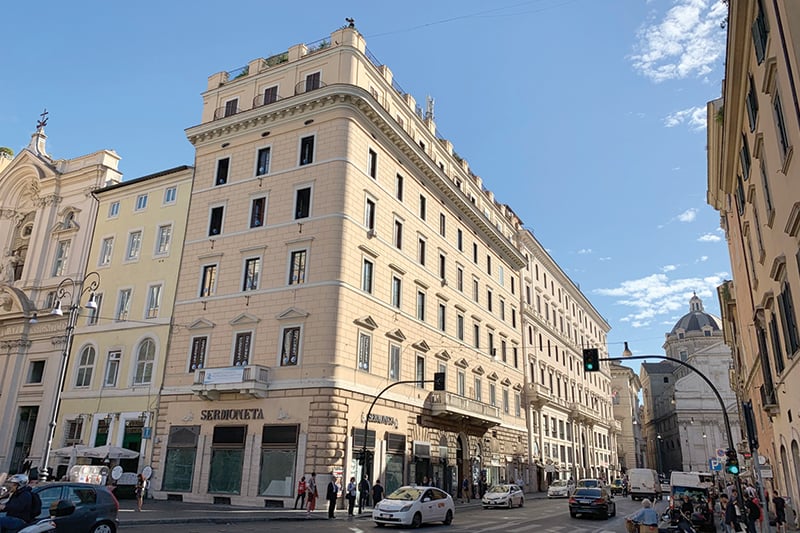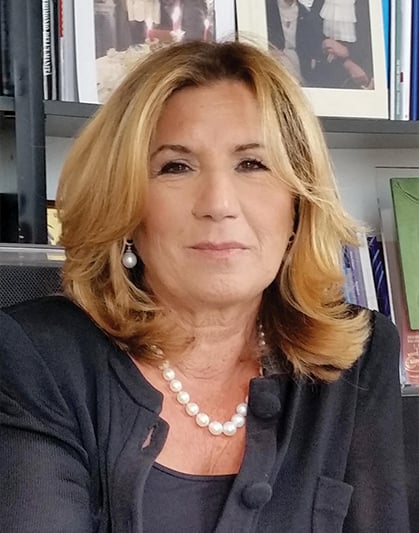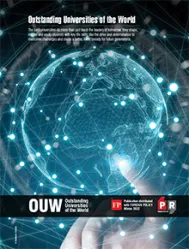Uninettuno: A Masterclass in Solid Distance Learning
As technology has evolved, so has this innovative Italian university's methods of delivering comprehensive online courses and classes to students in dozens of countries worldwide, explains Rector, Maria Amata Garito

Uninettuno’s digital platforms and high-tech learning tools make it a popular choice
What are Uninettuno’s most distinguishing features, both in Italy and in the global e-learning space, and what are its core values and ambitions?
The International Telematic University Uninettuno was founded in 2005 by the Nettuno Consortium. Its origins have strongly forged its identity and its values: Education, Research and Innovation, Internationalization, Inclusion and Passion.
These five principles have always inspired all people working at the University to let the model of Uninettuno grow; together we have created a laboratory of multicultural and multilingual cooperation, that has really made the access to knowledge democratic. Regarding the Nettuno Consortium, it was born in 1992; its members were traditional public universities and companies from all over the world, including 41 Italian universities, such as Milan Polytechnic, Turin Polytechnic, University of Bologna, Rome “La Sapienza” University, University of Florence, Naples “Federico II” University.

There were also 31 universities from countries all over the world. The primary purposes of the consortium were the creation of a distance-learning model in the context of the traditional universities, as well as conducting research activities focusing on how to use the available mainstream technologies for distance learning, and on identifying psychological models to adapt these technologies to educational context in a coherent and effective way.
Given that technology was very primitive compared to today’s instant communications, how did you successfully educate so many students remotely?
At that time, we did not have remote learning in Italian universities. The Nettuno Consortium fostered the creation of technological poles and production centers in its member institutions, bringing innovation to all the participating Italian universities. Since the Internet had not been invented, the didactic organizational model developed was a blended learning one.
We used the available technologies — satellite TV channels and public television. Students were able to watch the lectures produced by the best professors from the participating universities. They were recorded and broadcasted on satellite TV and made available on VHS cassettes. Students also interacted among themselves and with their professors/tutors through in-person meetings, organized in the evenings or at weekends at the member university campuses, carrying out assignments and exercises, or attending seminars.
“Our didactic offering is available online. It is public and you can see the topics covered by the different programs offered.”
The key aspect of the Nettuno blended model was the creation of a quality, valuable distance university learning model. Since students could access the lessons and course content provided by the best professors in Italy, the quality of the programs delivered as a consortium was higher than that provided by the member universities on their own. In the consortium, students could learn from the best physics professor from Turin, or the best math professor from Bologna; experts at the top of their respective fields. It’s important to note we kept doing research on the less well-known technologies in order to anticipate their dissemination, hence we were able to continuously evolve the model, integrating the new technologies as they became available to the public.
How important is the teaching of the concept of sustainability throughout your programs, and how is the university pushing these concepts internally?
Actually, this touches on one of our main core values. In 2005, Nettuno Consortium was transformed into a full-online university. From that moment, we started collaborating with universities of the Arab world and of Sub-Saharan Africa. From these partnerships, we developed joint and common curricula involving professors and experts from international universities such as Helwan University in Cairo, or Al Akhawayn in Morocco, as well as leading institutions in Jordan, Tunisia and elsewhere.
We involved their professors, managers, experts in this design and development process in order to mix different cultural backgrounds and values to build something sustainable and create a bridge along the northern and southern shores of the Mediterranean Sea.
This also allowed us to create bridges among different cultures and to allow the young students who were enrolled in programs to benefit from a multicultural environment. In this way, the university performed one of the roles it needs to have in the 21st Century: being used by many different and diverse cultures.
Being an online university facilitates this need to quickly innovate and update the curricula provided to students. Our didactic offering is available online. It is public and you can see the topics covered by the different programs offered.
What is your final message to readers of Foreign Policy?
Reflecting on the fact that the real capital of human beings is knowledge, through technology and methodologies we can bring knowledge and competences to the whole world, even to the poorest areas. This is the global wealth of the future, the development of a competence and knowledge democracy. I wish my message to make relevant stakeholders reflect on two vital aspects.
They have created one of the most beautiful things: the World Wide Web (WWW). At the moment, it is not so full of intelligent things. We need to fill the WWW with a new vision. These values are about all of humanity. We must never forget the significance of humankind if we want to change the world for the better. Otherwise, we will keep repeating the same disastrous life experiences that are keeping us at a distance, dividing us and not unifying humanity.
Report Contents:

 Download the PDF
Download the PDF